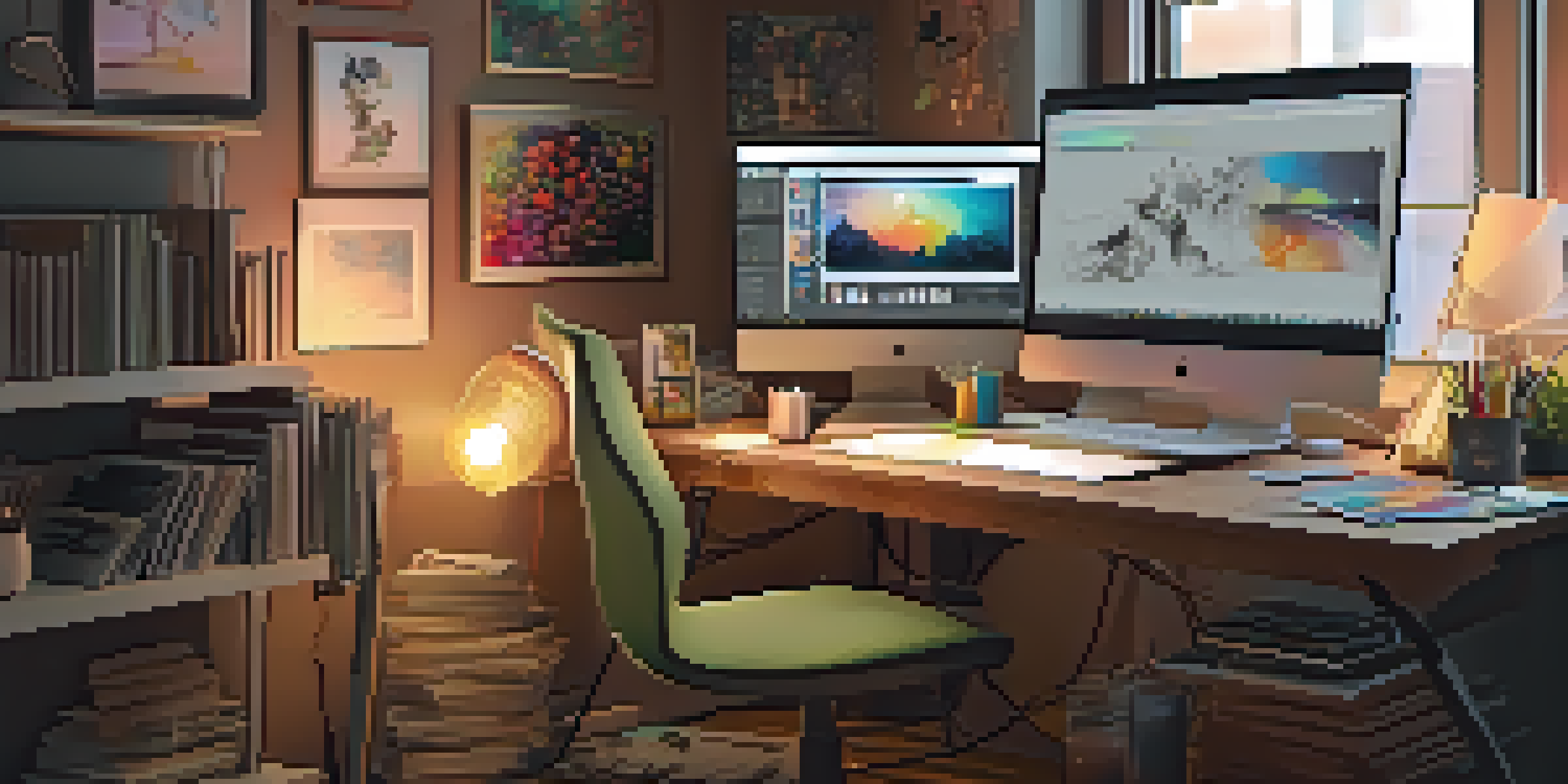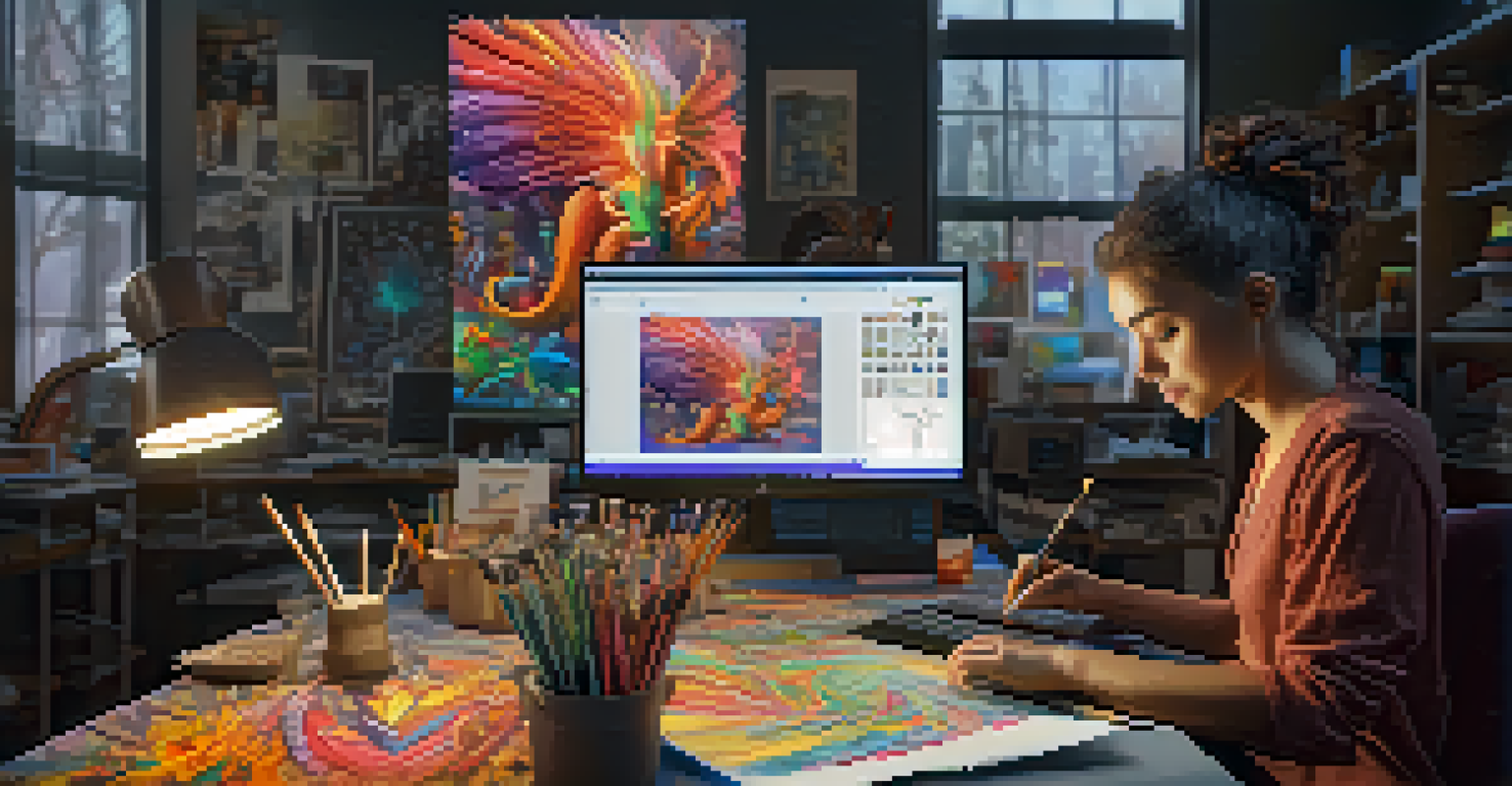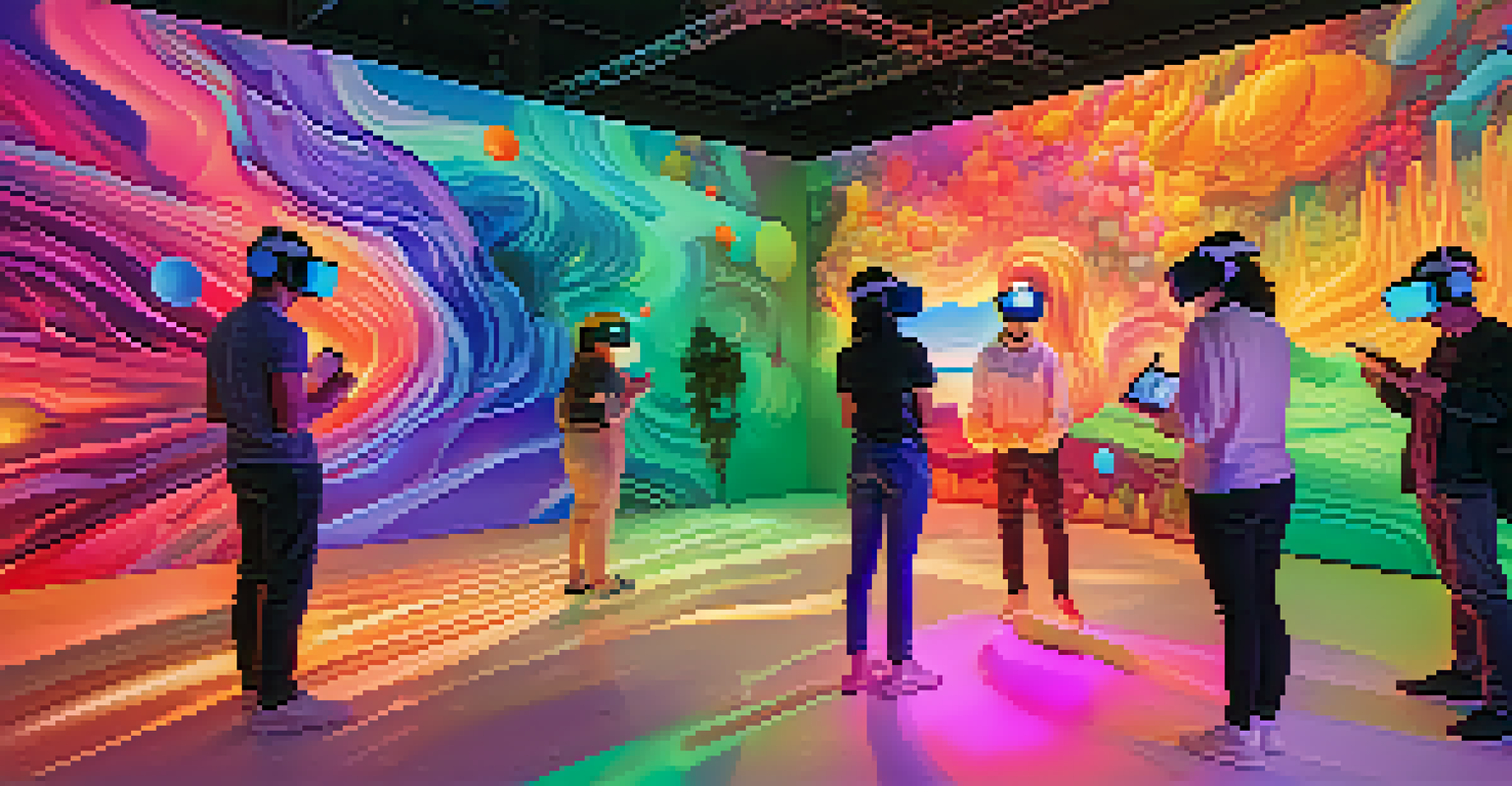The Role of Technology in Modern Digital Art Creation

The Evolution of Digital Art Through Technology
Digital art has come a long way since its inception, evolving from basic computer graphics to complex masterpieces. The introduction of software like Adobe Photoshop and Illustrator revolutionized how artists create and manipulate images. These tools allow for a level of detail and precision that traditional media simply can't match.
Art is not what you see, but what you make others see.
Moreover, advancements in hardware, such as graphics tablets and high-resolution monitors, have enhanced the artist's experience. With pressure-sensitive pens, creators can replicate the nuances of painting and drawing with incredible accuracy. This marriage of technology and artistry has opened new avenues for expression and creativity.
As technology continues to evolve, so does the definition of what constitutes art. Artists are increasingly blending traditional techniques with digital tools, creating unique pieces that push the boundaries of the art world. This evolution not only showcases the versatility of digital art but also highlights the essential role technology plays in modern creativity.
Software Tools Empowering Digital Artists
The software tools available today are a game-changer for digital artists. Programs like Procreate and Corel Painter mimic traditional art techniques while offering innovative features that enhance the creative process. These applications provide layers, brushes, and effects that can be customized to suit an artist's unique style.

Additionally, many of these tools come equipped with tutorials and community forums, helping artists learn and grow. This accessibility means that aspiring artists can develop their skills and find their voice without the heavy costs associated with traditional art supplies. It democratizes art creation, making it more inclusive.
Technology Transforms Art Creation
Advancements in software and hardware have revolutionized the way artists create, blending traditional techniques with digital tools.
Furthermore, the rise of cloud-based platforms allows artists to work collaboratively, regardless of their physical location. This capability fosters a sense of community and shared inspiration, which can lead to groundbreaking collaborations and innovative projects. It highlights how technology not only facilitates the creation of art but also nurtures artistic relationships.
The Rise of 3D Art and Animation
Three-dimensional (3D) art has gained remarkable traction in recent years, thanks to advanced software like Blender and Autodesk Maya. These programs allow artists to create intricate models and animations that can be used in everything from video games to films. The ability to manipulate objects in a virtual space adds a new dimension to artistic expression.
The only way to do great work is to love what you do.
Moreover, the integration of technology such as virtual reality (VR) is transforming how we experience art. Artists can create immersive environments that viewers can explore, making the art experience more interactive and engaging. This shift invites audiences to become part of the artwork rather than merely observers.
The demand for 3D art in various industries, including advertising and entertainment, has also propelled its popularity. As businesses seek to capture audience attention in innovative ways, 3D artists are increasingly in demand. This trend showcases how technology not only enhances artistic capabilities but also opens new career pathways for digital artists.
Artificial Intelligence and Art Creation
Artificial intelligence (AI) is making waves in the art world, providing artists with unique tools to enhance their creative process. Programs powered by AI can generate artwork based on input from the artist, suggesting styles, colors, or even entire compositions. This allows artists to experiment with new ideas and push their creative boundaries.
However, the role of AI in art creation raises important questions about authorship and originality. If a machine can create art, what does that mean for the artist's role in the process? This ongoing debate invites reflection on the nature of creativity and the relationship between humans and technology in artistic endeavors.
AI Enhances Artistic Expression
Artificial intelligence is providing unique tools for artists, allowing them to explore new creative possibilities while raising questions about authorship.
Despite these challenges, many artists embrace AI as a collaborative tool rather than a replacement. They view it as a means to augment their skills and explore new possibilities. This synergy between human creativity and machine learning can lead to unexpected and exciting results, enriching the digital art landscape.
The Importance of Online Platforms for Artists
Online platforms have become vital for digital artists, allowing them to showcase their work to a global audience. Websites like Behance and ArtStation provide spaces for artists to build portfolios and connect with potential clients. This visibility can lead to job opportunities and collaborations that may not have been possible otherwise.
Social media also plays a significant role in the promotion of digital art. Platforms like Instagram and TikTok allow artists to share their process and engage with their audience in real time. This interaction not only builds a community but also helps artists receive immediate feedback, which can be invaluable for growth.
Moreover, online marketplaces like Etsy and Redbubble enable artists to sell their work directly to consumers, bypassing traditional retail channels. This shift empowers artists to take control of their careers and monetize their creativity in ways that were previously unimaginable. The internet has truly transformed the art market, making it more accessible and diverse.
The Impact of Social Media on Art Exposure
Social media has fundamentally changed how art is consumed and shared. With just a few clicks, artists can reach millions of viewers, showcasing their work to diverse audiences worldwide. This unprecedented exposure can lead to increased recognition and opportunities for artists, both emerging and established.
Additionally, social media allows for a more interactive experience between artists and their followers. Artists can share behind-the-scenes content, engage in discussions, and receive instant feedback on their work. This connection fosters a sense of community and belonging, encouraging artists to keep creating and evolving.
Online Platforms Boost Visibility
Digital platforms and social media have become essential for artists, offering global exposure and new opportunities to connect with audiences and monetize their work.
However, the pressure to maintain an online presence and produce content regularly can be overwhelming for some artists. Balancing creativity with the demands of social media can be challenging, leading to burnout. It's crucial for artists to find a healthy balance that allows them to share their work without compromising their artistic integrity.
Future Trends in Digital Art Creation
As technology continues to evolve, so will the landscape of digital art creation. Emerging technologies like augmented reality (AR) and blockchain are beginning to make their mark, offering new ways for artists to express themselves and protect their work. AR, for instance, allows artists to create interactive experiences that blend the physical and digital worlds.
Blockchain technology is also changing how digital art is bought and sold, enabling artists to create non-fungible tokens (NFTs) that grant ownership of digital pieces. This shift is not only altering the art market but also empowering artists to monetize their creations in innovative ways. It creates a new paradigm for ownership and value in the digital space.

Looking ahead, the integration of technology in art will likely continue to push boundaries and redefine creativity. As artists embrace new tools and platforms, we can expect to see a diverse range of artistic expressions that challenge traditional notions of art. The future of digital art is bright, filled with endless possibilities waiting to be explored.